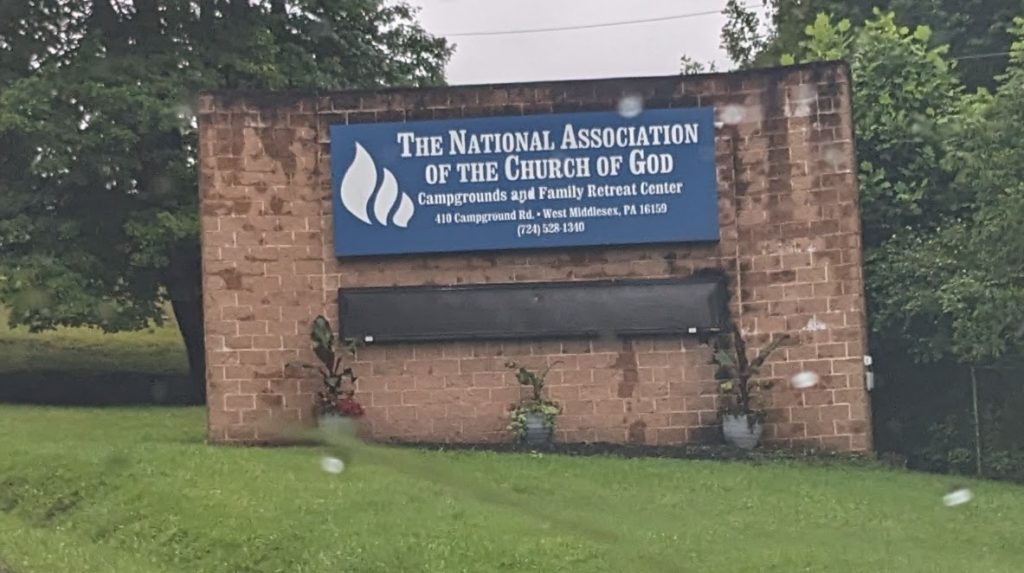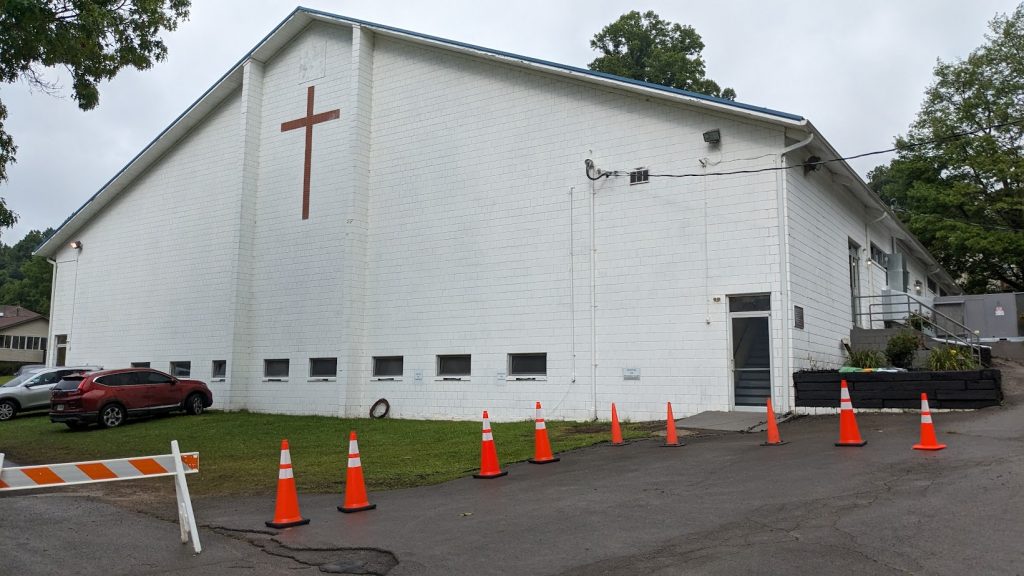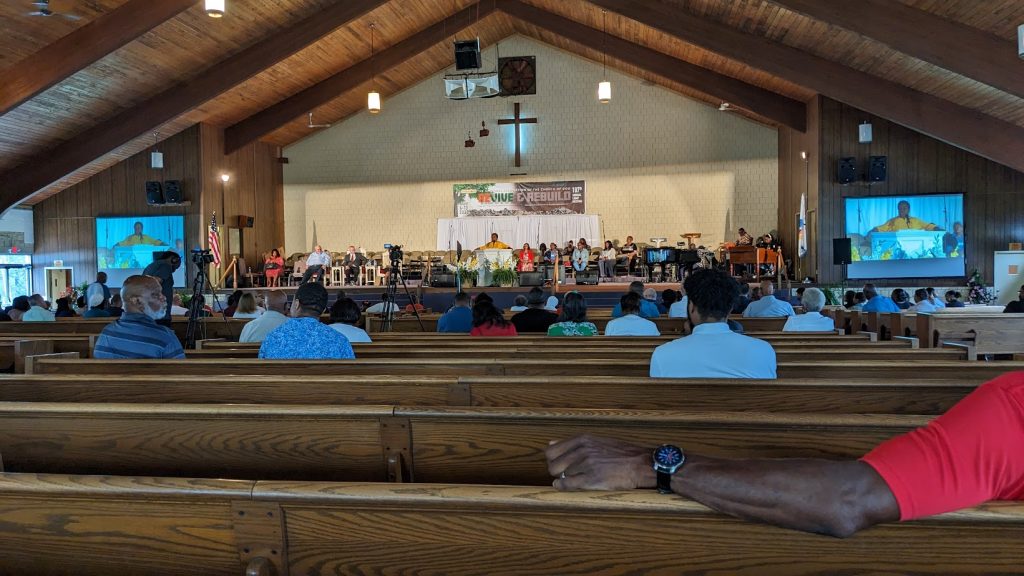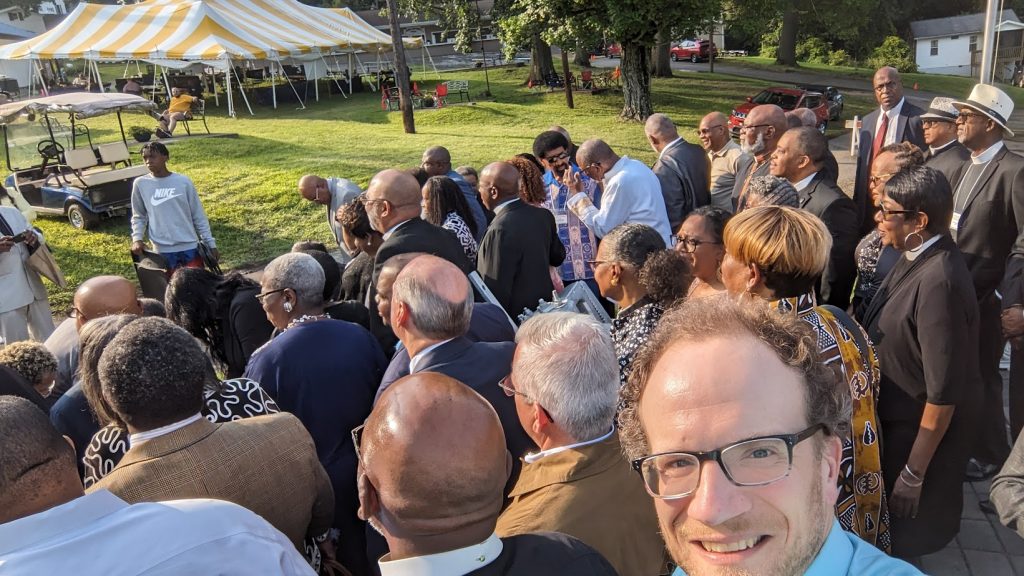
Last week, I had the opportunity to attend a couple of days of the camp meeting at West Middlesex, Pennsylvania. This was the 107th annual gathering of the National Association of the Church of God, and it was my first time to visit this area and attend services on “Zion’s Hill.”
Zion’s Hill is the name given to the hill on which the campground sits. Zion is a biblical reference to Jerusalem, the holy city of God. You can get a sense, just from the name, how people view this place and value the experiences that generations of Christians have shared there. I heard people use the phrase “sacred ground” multiple times during my visit.
Getting to the campground is a pilgrimage, in more ways than one. West Middlesex is in extreme western Pennsylvania, and the campground is a few miles outside of that town. From our hotel room, I drove through the forested Appalachian foothills along winding roads, which were barely wide enough for two vehicles and were not painted with lane markings. Finally, a clearing appeared along Campground Road, and I pulled into a spacious and beautiful area. Past a large and neatly mowed field of grass stands the sanctuary, a large white brick building. Beyond the sanctuary, further up the hill, I saw a number of houses and cabins where people live during the week of the camp meeting.

One important thing to understand about West Middlesex and the National Association is that this camp meeting is predominantly attended by African-American Christians in the Church of God. It’s been that way since their first gathering on Zion’s Hill in the early 1900s. We have a great deal of racial and ethnic diversity in the Church of God, more than in many other denominations, but we don’t always visit each other’s spaces. One of the preachers last week said, “We have too many separate spaces in the Church of God.”
We don’t always make the effort to see things from others’ perspectives, to worship in other styles, to experience being in the minority. (I say this from the point of view of a white man who lives in a 98%+ white county in central Michigan).
So I went, and I experienced lots of warmth, welcoming smiles, pleasant conversations, and joyful connections. I arrived alone but was glad to run into many people I’ve met in various places in the past.
I attended three worship services on Zion’s Hill before traveling onward. Much of what I experienced was familiar to me from other African-American worship services I’ve attended. Also, many of the songs we sang were quite familiar – old Church of God standards like “I’m Going On” and “In the Light of God.” But some things were new to me: The role of the chairperson, who actively directs or emcees the service from one element to the next. The offering time, when everyone who gives an offering marches up to the front to drop their gifts in the offering buckets. The ministers’ procession on Thursday night, when all ordained ministers are honored as they process into the sanctuary and sit in the very front pews.

But one thing in particular stood out to me. It’s something I’ve read in books and heard in talks about African-American worship and probably seen before, but it’s beautiful to observe afresh:
People often sway from side to side in absolute unison with each other while they are singing. Not always, but often, and usually in response to the choir’s movements on the platform. It’s a way for these fellow Christians to embody their unity in worship. With every step they take, they are supporting others and are supported by others who are taking the exact same steps. They carry the messages of hope, sorrow, joy, peace, comfort within their bodies. That embodied sense of connection with each other shines through powerfully in how the people sway – even people who come from different parts of the country and may not know each other very well. The sense of embodiment reaches back through generations of believers who have swayed to the same music in that exact same space. This is a crucial component of African-American Christian worship which developed and grew through the horrors of slavery and the injustices of racial discrimination. This type of embodied corporate worship is something that I, as a white person with a white church background, simply do not have in my cultural vocabulary. It is something I deeply appreciate about the brief time I spent on Zion’s Hill last week.

On Thursday evening, before processing into the worship service, all the ordained ministers gathered near a large church bell for the annual ministers’ photograph. I stood at the back of the group because of my height, and as I stood there, I thought about the generations of pastors, chaplains, ministers, preachers, and servants who have stood there in the past. I am grateful for this first visit to West Middlesex and for the connections I made there. I have every intention of visiting again in the future – hopefully with more first-time visitors, too.